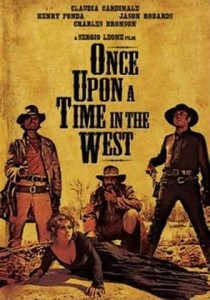Focus groups killed the classic Western … focus groups and the notion that every significant plot point needed to be charted, categorized, cataloged and certified before a project could move forward. And what a tragedy that is, really. I mean, there was such an artform to those sprawling early Westerns – a steadfast appreciation for the fact that low-rent trollops were actually low-rent trollops, heroes and villains were morally ambivalent, and the average cowpoke ran so ripe that giant horseflies took to nesting on his face.
That world is all but gone now, rendered moot by the fact there is no big-budget formula that accounts for the violent killing of woman and children, no allowance for rape as a matter of historical record, no reconciling the fact that – at least in the wild frontier days of yore – mercy and compassion were the vestige of the weak. No, sir. Those amoral vices only test well with the Mafia audience. In fact, more often than not, the modern Western feels more like an homage – a glossy caricature brimming over with white-wash veneers. You’ll not find so much as an out-of-place scratch among the lead cast, let alone the usual cadre of freaks and geeks that an honest-to-goodness classic Western might actually call for.
At the forefront of the Western genre throughout the 1960s was Italian Writer/Director Sergio Leone – Lord of The Revenge Epic, Maestro of the Dollars Trilogy, known in various circles as the man who turned down Paramount’s Godfather. While most critics point to The Good, The Bad and The Ugly as the absolute pinnacle of Leone’s career (if not the Western genre, altogether), it was Leone’s follow-up, Once Upon a Time in The West, that inextricably solidified his legacy. Panned by critics and shunned by mainstream audiences, Leone’s masterpiece has since been added to Time Magazine‘s list of the 100 Greatest Films of All-Time. Certain aspects of the movie have also popped up in everything from Back to The Future to Inglourious Basterds.
Once Upon a Time‘s slow pacing and stiff cues play like a clinic in film tension. The good guys are bad, the bad guys are good, and the story unfolds retroactively, creating a multi-layered effect that keeps viewers guessing straight up to – and through – the climax. Once Upon a Time is long and labored and it’s sometimes taxing to endure. But the story is so rich and the payoff so significant, that all the requisite down time doesn’t really seem to matter. In the final analysis, Once Upon a Time remains a classic, constructed in a signature mold by the greatest director the Western genre’s ever known. It stands as living proof that Charles Bronson was actually once young, that Henry Fonda and Jason Robards never were, and that composer Ennio Morricone was capable of doing the same thing with a few notes and a harmonica that Johnny Williams was capable of doing via two notes and a piano. Slap it all together and what you’re left with is one hell of a kick-ass Western, the kind we shant see the likes of again.
(Once Upon a Time in The West is currently streaming via Netflix.)

